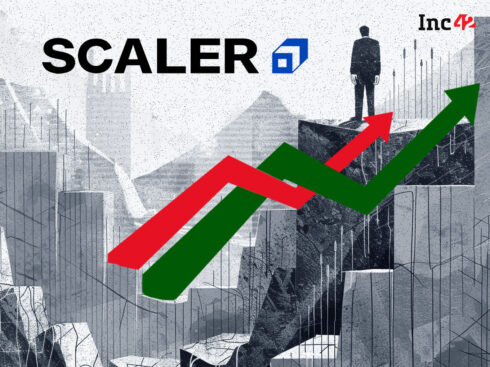
SUMMARY
The part of the entrepreneurship curriculum that’s missing is offering entrepreneurial appreciation classes to everyone.
Entrepreneurship education needs to be a combination of theory and practice.
An entrepreneur inside of a company is somebody who knows how to get stuff across the finish line inside the bureaucracy.
Worth a read.
Interview highlights:
- How is the way that universities teach entrepreneurship evolving?
- Lean LaunchPad class developed for Stanford
- Innovation and entrepreneurship will become the liberal arts of the 21st century
- Teaching basic entrepreneurial appreciation
- Mission-Driven Entrepreneurship
- Hacking for X classes
- Ethics in entrepreneurship
- How has innovation in large corporations evolved over the last 10 years?
- Innovation theater in large corporations
- “I want to see what you look like in a prison suit.”
- What are companies doing beyond innovation theater?
- How innovation can succeed inside of a large company
- The easy part is, “Let’s have an incubator.” The hard part is, “How do we deliver something?”
- “Heroic innovation” within large corporations
- End-to-end “Innovation Pipeline” process
- Innovators are not entrepreneurs
- Building an entrepreneurship ecosystem
- How can corporations work more closely with universities?
Philip Bouchard: You’ve started teaching at Berkeley since 2002, Columbia in 2003 and at Stanford since 2011. How is the way that universities teach entrepreneurship evolving? What changes have you seen in the last 15 years?
Steve Blank: When I first starting teaching, the capstone entrepreneurship class was how to write a business plan. Other classes were on how to prep for VC pitches or develop the five year income statements, balance sheets and cash flows or read case studies. Today, people laugh if somebody says that’s a capstone entrepreneurship class. But years ago, we had no alternative – how to write a business plan was it.
My contribution has been, “Why don’t we design classes more closely modeled to what innovators and entrepreneurs actually do.” Today the capstone class is most often experiential, team-based, hands on, focused around the search for a repeatable and scalable business model. And the Lean LaunchPad class I developed at Stanford was the first such class. It was adopted by the National Science Foundation for commercializing science in the United States. It’s called NSF I-Corps.
The other change is that universities, instead of being passive, have become active in building an entrepreneurial community. In addition to Stanford I also teach at Columbia, and at these research universities – Stanford, Columbia, Berkeley, and others – they all now have an internal incubator, they have maker spaces, they have their own venture funds, they connect to the community, they connect to venture capital. They’ve become outward-facing universities. It’s a big idea.
Years ago, entrepreneurship was taught like everything else, inward-facing, which was a mindset of, “I focus on what I know as an academic and I will teach you that,” which was mostly theory and/or consulting experience with large corporations. And the odds of learning from faculty who actually had experienced the chaos and uncertainty of building a startup was low. It wasn’t really part of the job as an educator. Today, if you’re building an entrepreneurship program, the teaching team most often includes adjuncts with entrepreneurial experience as complements to the tenured faculty, classes are experiential and the community you’re building is a set of additional components that never existed before.
PB: In addition to being more outward facing, how should universities be thinking about what to offer next? What do you see in the next 2-3 years?
SB: I think innovation and entrepreneurship will become the liberal arts of the 21st century. With the nature of work changing, the core skills entrepreneurs need to know to become practitioners are actually core skills that everybody will need to know to get a job: creativity, agility, resilience, tenacity, curiosity.
The analogy I like to use is that 500 years ago in the Renassiance we realized that the best way to teach artists, painters and sculptors, was by via hands-on apprenticeships and long-term commitment. You learned a modicum of theory and got a ton practice. (Today, if you’ve decided the arts are your career, your goal might be to get into Juilliard or CalArts.)
But about 100 years ago, in the art world, somebody had a lightbulb moment and said, “Wait a minute, in addition to the capstone classes, why don’t we teach art appreciation at the earliest possible age to everyone?” For example, finger-painting, making clay ashtrays and writing. The reason for that is two-fold. One is to have people self-identify at an early age that, “Oh, my gosh. Painting can be a career? I knew I was interested.” And second, so that the rest of us who are not going to be artists can appreciate how hard it is, and learn how to look at art and how to look at sculpture and how to appreciate good writing.
I believe the analogy is identical for entrepreneurship. The capstone entrepreneurship classes like NSF I-Corps or a Lean LaunchPad class, are for those who have already decided they want to be entrepreneurs. The part of the entrepreneurship curriculum that’s missing is offering entrepreneurial appreciation classes to everyone. We ought to be creating a set of classes on creativity, agility and resilience and being able to tell facts from “fake news” — components of innovation and entrepreneurship that I think are going to be required 21st century skills.
PB: The trend is to add majors, minors and certificates in entrepreneurship. Not just in the business schools. For example, you can minor in entrepreneurship at the University of Colorado College of Music. In terms of teaching basic entrepreneurial appreciation, how saturated should entrepreneurship become? Is it one or two courses? Where do you see this trend going?
SB: Teaching basic entrepreneurial appreciation in the 21st century is literally the equivalent to liberal arts of the 20th. Forward thinking schools will start offering a series of classes that are core curriculum like liberal arts were in schools in the ’50s through the ’80s that said “for a liberal arts education you need to understand literature and you need to understand art.” In the 21st century we’re going to add some additional core skills.
That said, entrepreneurship education needs to be a combination of theory and practice. It’s pretty easy to offer classroom entrepreneurship lectures and forget that it’s the hands-on application that makes the theory relevant. Think if medical schools just taught doctors the textbooks, but never had them touch a patient.
The other direction where teaching is going – and what we’ve been pioneering – is Mission-Driven Entrepreneurship. Instead of students or faculty coming in with their own ideas — we now have them working on societal problems, whether they’re problems for the State Department or the military or non-profits/NGOs, or for the City of Oakland or for energy or the environment, or for anything they’re passionate about. And the trick is we use the same Lean LaunchPad / I-Corps curriculum — and kept the same class structure – experiential, hands-on, driven this time by a mission-model not a business model.
Mission-driven entrepreneurship is the answer to students who say, “I want to give back. I want to make my community, country or world a better place, while solving some of the toughest problems.” These classes include Hacking for Defense, Hacking for Diplomacy, Hacking for Energy, Hacking for Impact, or Hacking for Oceans, etc., but the umbrella term is “mission-driven entrepreneurship.” The class syllabus uses exactly the same pedagogy as the Lean LaunchPad and I-Corps classes.
PB: How has your Lean LaunchPad course, ENGR 245, evolved?
SB: I’ve always believed that great classes continue to thrive after the original teachers have moved on. To be honest, as I watch other instructors now run these classes, I feel a proud “passing of the torch” though touched by moments of King Lear and Kurosawa’s Ran. Way past my ad hoc activities, the Stanford teaching team has thoroughly professionalized the class.
After eight years the class is still taught to students working on their own problems. It’s taught at Stanford, Berkeley, Columbia and probably another hundred universities and colleges because I open-sourced the class and trained educators on how to teach it. 98 universities teach it through the National Science Foundation.
As I mentioned, the Mission-Driven Entrepreneurship classes are a new variant that’s taught in ~30 universities. The nice part is that we have educators who are already trained on teaching Lean LaunchPad or I-Corps, so for the educators there’s nothing particularly new. The only hard part about it, is to get well-defined problems from sponsors in the local city or government agency that you offer to students.
PB: Everyone looks for a turnkey solution. “I want a low overhead, self-guided solution.” Can someone go through your Lean LaunchPad step-by-step course without a trainer? Can it be self-directed? How long does it take to train a trainer?
SB: All my class lectures are online at Udacity.com for free. Can you become a founder by watching videos? Perhaps, but founders are closer to artists than any other profession. So can you become an artist by reading about art? Can you learn entrepreneurship without taking an experiential hands-on class or better, actually be part of a startup? Well, you can read a lot about entrepreneurship and learn the theory, but it’s like reading about painting or sculpture or music. You need theory and practice – lots of practice.
PB: Is ethics in entrepreneurship going to be part of the broader entrepreneurship curriculum like a general liberal arts education? Is ethics something that you bring into your Lean LaunchPad course or your ENGR 245 course?
SB: I think ethics are a critical missing component of most business curriculums. At Stanford, Tom Byers, who runs the innovation and entrepreneurship program inside the engineering school, has made that a big deal and it’s now part of the curriculum. Tom has added a class on entrepreneurial ethics.
However, the problem with teaching entrepreneurial ethics is the same as with teaching corporate ethics: Everything is great in theory until the sxxt hits the fan. When you don’t have any checks and balances, that is, when the government isn’t really paying attention or there are no consequences, you tend to get people who game the system, whether they’re corporations or they’re entrepreneurs and innovators.
It’s exactly like if you’ve ever been driving on a highway and reach a merge and people are cutting into the line and you go, “What the heck am I’m doing waiting for the merge while people are cutting in?” Then everybody else starts doing it and you think “Why am I the only person who’s patiently waiting?” There’s a social component about what’s the norm for behavior.
It’s not like we need a nanny-state, but if there’s no enforcement at all, we can teach ethics all we want, but people tend to devolve to the least common denominator.
PB: How has innovation in large corporations evolved over the last 10 years? You talk about “innovation theater” in large corporations. What’s the trend in terms of corporations developing cultures of innovation and programs for intrapreneurs?
SB: If you’re a large corporation, the world has turned upside down. In hindsight the 20th century was the golden age for corporations. Today, companies face five challenges they never had to deal with:
Challenge one – As companies are discovering every day, the web has changed everything. Distribution channels, brand loyalty, etc.
Challenge two – Large companies are dealing with startups that are funded with unimaginable capital. In the past, the idea of a startup having more capital than an existing corporation was a fantasy. But today if I’m a startup and I’m raising a hundred million dollars or billions of dollars, like Uber, Airbnb or Tesla, I can take on an entire industry.
Challenge three – Today, investors willingly fund startups to do anything on day one. Anything. Including break the law. Tesla, Airbnb, Uber, all were predicated on, “Well, what if we said, ‘screw the law’. How big would that opportunity be?”
In the 20th century no venture capitalist would have funded that. In the 21st century they got out their little eyeshades and calculators and said, “Ha! If we actually succeed, there’s a $10 billion company here.”
In contrast, as much as a corporation wants to do that, the first thing that will happen is your general counsel’s in your office saying, “I want to see what you look like in a prison suit.” Because a company can’t do the things that a startup can.
Challenge four – In a startup, 100% of the company is focused on innovation and entrepreneurship. In a large corporation, 99% of the company is focused on execution of the current business model by building repeatable processes and procedures. And a very small percentage are focused on innovation. I could keep going on down the list.
Challenge five – In a startup, if you win, it’s a payout of billions of dollars. In a large company, for the individual, there is no such payout.
PB: However, there are some companies that do evolve, that do pivot and make the right changes. What you’re talking about, “A large corporation is not a startup,” doesn’t necessarily mean it’s going to go the way of the dodo. What are companies doing beyond innovation theater?
SB: I just wanted to give you the setup of why it’s harder for corporations. Not why they can’t do it. In spite of all the things that I just mentioned, there are large companies that have figured out how to build innovation ecosystems. My favorite is a private company called W.L.Gore & Associates. At their core they make products out of expanded PTFE like GORE-TEX fabrics. But they’ve taken that basic technology past fabrics into multiple markets – medical, filtration, fibers, cables, etc. They have a process of continual innovation – an innovation pipeline. But this type of innovation requires leadership who understands that is their goal. If you’re a large company’s CEO today, the problem is that you’re dealing with, well, lots of issues, not just innovation.
- One – “How do I deal with activist investors who want to take my company apart and sell it for pieces?”
- Two – “I’ve been hearing about this innovation stuff, but if I’m running a 10,000-person company, my skill-set is about execution, not innovation. I might give you some head nods about innovation, but I really don’t have that in my DNA.”
- Three – Companies are driven by processes and procedure, those same processes and procedures strangle innovation in its crib. For innovation to succeed inside of a large company, you need a parallel set of processes, not to replace the existing ones, but to operate on a fast track.
Some companies have figured out how to do this, not just internally, but by just acquiring those that do. So, if you think about how a large company can innovate, they could build, they could buy, they could partner, they could license. All parts of their toolset where startups don’t have those opportunities. Basically, startups are just building.
PB: Large corporations have a number of tools they use for innovation. One area is innovation challenges and idea challenges to come up with a thousand new ideas. A second option is for corporations to provide accelerators where they invite startups to apply to be part of their accelerator program. A third is incubators and makers’ spaces. Do you see those as innovation programs that can work? They’re spending a lot of money on it.
SB: No. What you just described is innovation theater. These are innovation activities, not deliverables. The hard part in a company is not getting a demo or setting up an internal accelerator, it’s getting something delivered all the way through your existing sales channel. What does it take to get from that demo into your engineering group, to be delivered as a product into your existing sales channel? And that’s where the difficulties are. You run into, “Well, wait a minute, this isn’t on our budget or schedule.” “Wait a minute, this conflicts with our existing product line.” “This will put our most profitable product out of business,” or “We don’t even have a sales force that knows how to sell this thing.”
A good number of companies focus on the easy part, which is, “Let’s have an incubator/accelerator.” The hard part is, “How do we deliver something with speed and urgency?” For example, when I teach this for the government, our focus is on innovation that gets deployed and fielded, not demos. (Yes, you might need a demo to convince someone to fund your program, but the demo is not the goal – delivery is.) Companies have more demos than they’ll ever need. But really the goal of a successful innovation program is figuring out how do you deploy something by getting through the hard political wiring diagram of who owns what, and how does this differ from what we already have, and which budget is it going to come from, and “this is unscheduled” and “wait a minute, it doesn’t meet our quality standards” and “we’re going to screw up our brand”?
How do we solve those problems? And that doesn’t mean it’s not solvable. It just means the “Let’s throw a party” approach reminds me of the old Andy Hardy movies of “Let’s put on a show.” Ok, we’ve got a show, now what?
The “now what” is that we lack a corporate innovation doctrine.
PB: I’m going to read a quote from you, which is “We believe the next big step is to get teams of leaders to think about the innovation process from end to end. That is, to visualize the entire flow of how and from where an idea is generated – the source – all the way to deployment – how to get it into the user’s hands.” You also have talked about an innovation stack and operational innovation, which is absent and so difficult to implement. What prompted these insights?
SB: Here’s what I observed. Large companies and government agencies have always had innovation, but it’s what I call “heroic innovation.” That is, there was no process, no procedure, but you always hear stories about somebody who managed to get a new product or idea out the door. We tend to celebrate those without anybody ever thinking, “Well, wait a minute. Maybe the fact that there are no formal innovation processes is the problem, not that there was some heroic stuff happening.”
In the last couple years, my work, Eric Ries’s work, Alexander Osterwalder’s work, all were focused on building a body of professional knowledge – doctrine – around innovation. And as part of that we’ve developed a set of tools that could be used to search for business models. Companies have adopted this innovation doctrine and startup tools and have been running accelerators and whatever. The problem is that there still wasn’t an end-to-end innovation implementation process, inside a large company.
What we came up with last year is called the Innovation Pipeline, a process inside a company or a government agency that says, “Let’s start with innovation sourcing. And then build a process to take that all the way to delivery or deployment. What are the steps internally we need to take that are different than how engineering builds products today?”
This end-to-end pipeline has a couple of steps. The first step is where the ideas or technology come from. They can come from inside the company, outside as acquisitions, universities, etc. The second step is, “What problem are we solving?” which we call problem curation. “Is this a real problem or is this a neat piece of flashy technology? How do we prioritize all the things we’re now doing inside this pipeline. And then how do we test solutions and hypotheses?”
In the middle of this pipeline is the I-Corps Lean LaunchPad methodology for customer discovery and validation. Next, how do we incubate it, and then how do we transition and integrate it with our existing engineering and sales organizations to deliver this stuff That’s an end-to-end process.
By contrast, an incubator and accelerator is a point activity.
As we’ve been teaching organizations this end-to-end Innovation Pipeline process we realized that at each one of those steps the team evolves. At the beginning of that pipeline you might have an innovator, a technologist in R&D. That’s great, but we now know that either in startups or large companies innovators don’t make sxxt happen. They invent things.
Typically, to partner with the innovator on the first step, you need to find an entrepreneur. An entrepreneur inside of a company is somebody who knows how to get stuff across the finish line inside the bureaucracy. That’s very different than the innovator. The mistake that we tend to make is, “Oh, let’s teach the innovators how to do that.” But innovators are almost never entrepreneurs. You can make them appreciate entrepreneurs, but they’re not the same people.
PB: A trending challenge for directors of university entrepreneurship programs is to build an entrepreneurship ecosystem. These executive directors are struggling to decide, “What do I build out next? What program do I add next?” Is there some way to take your approach and to direct it to building university entrepreneurship ecosystems?
SB: An example of what you just talked about is the tech transfer and venture group at Columbia University, run by Orin Herskowitz. Orin has spun seven different programs out of the Lean LaunchPad and Hacking for Defense programs. In energy and biotech and devices and whatever. Basically, using this pedagogy and building an entire ecosystem around it. It’s really impressive. Columbia’s tech transfer organization is a model of how universities may want to think about entrepreneurship ecosystems.
The other leading thinkers you should talk to are Tom Byers and Tina Seelig at Stanford. Stanford and Tom and Tina and their STVP program are still ground zero for entrepreneurship programs in the world.
Also to watch is Stephen Spinelli who just took over as Babson’s president. Between Spinelli, Orin, and Tom and Tina I think you’ll get an idea of the bleeding edge university entrepreneurship programs. If you want to talk to people who are inventing the future rather than talking about it, I would start with these three universities.
PB: How can corporations work more closely with universities? How can they tap into student entrepreneurship talent for developing the kind of disruptive initiatives that corporations want? Instead of waiting until something happens. How can you create a pipeline with universities that are local or even virtually with universities?
SB: For decades companies have been the primary acquirer of university research via tech transfer. And companies were the magnet for universities best and brightest students. No longer. In the 21st century companies are no longer competing for this tech and talent with their corporate peers, but with startups. To tap into university talent corporate innovation programs need to be more than an afterthought. Corporate leadership needs to make their internal commitment to innovation a beacon to the talent they desire.
[This post by Steve Blank first appeared on the official website and has been reproduced with permission.]


























